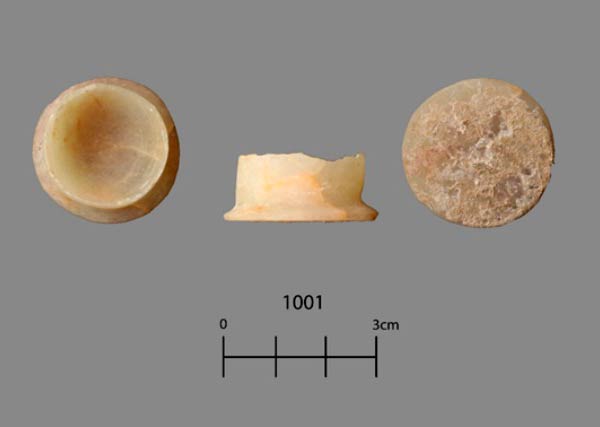The article below “Traces of Neolithic era uncovered in Iran’s Fars province” was published Payvand News on March 25, 2016, based on an original report by the Mehr News Agency.
==========================================================
The first season of archaeological excavations in Bavanat county in Fars province has led to the discovery of 200 objects with the oldest having traces back to the Neolithic era.
Morteza Khanipour, the leader of the archeological team, said the Hermangan site located west of Jashnian village in Bavanat county, Fars province, has been discovered in April 2015.

A number of objects discovered at Bavant county (Source: Payvand News).
According to him, over 50 per cent of the site has been completely demolished by farmers and only a few parts of it have remained. As noted by Khanipour:
“The excavations have so far led to the discovery of two settlement phases … In the older phase, the lack of architecture and the existence of several hearths and scattered ash could be indicative of the nomadic lifestyle of the settlers … on the deposits we discovered stratigraphic architecture including rooms and several other spaces that were painted in white clay, and the walls of two rooms that were painted red by using ocher.”
Due to unauthorized excavation, most of the rooms have been destroyed, thus making it impossible to give an accurate and definite explanation of their functions, he added.
The archeologist noted the discovery of a thermal structure in the trenches that was most probably an open furnace used for clay firing. Khanipour further avers:
“By comparing the potteries obtained from this site to the ones discovered in Mushaki Hill, Jeri Teppe, Bashi, and Kushk-e Hezar, one can say that the site dates back to the Neolithic era of Bashi archeological site and the TMB workshop of Mushaki.“
He went on place Hermangan archeological site somewhere between 8100-7800 BC.
Other unearthed objects during the excavations include stone tools such as microliths which indicate harvesting and agriculture, as well as protoliths that indicate the production of tools inside the settlement.



